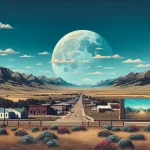Did you know that the Maroon Bells are the most photographed mountains in North America? Located just 10 miles west of Aspen, Colorado, the Maroon Bells-Snowmass Wilderness is a stunning destination for camping enthusiasts. With its breathtaking landscapes, diverse wildlife, and numerous outdoor activities, it’s no wonder that Maroon Bells attracts visitors from all over the world.
In This Article
TL;DR
- Maroon Bells is a world-renowned camping destination located in the heart of the Rocky Mountains
- The best times to visit for optimal camping experiences are from late June to early October
- Camping permits are required for overnight stays and can be reserved through recreation.gov
Exploring the Natural Beauty of Maroon Bells
The Maroon Bells are named for their distinctive maroon color, which is caused by the weathering of hematite, an iron-rich mineral found in the rock. The area is home to a diverse array of flora and fauna, including wildflowers, aspen groves, elk, black bears, and mountain goats.
For photographers, the Maroon Bells offer endless opportunities to capture stunning landscapes. The best times to photograph the peaks are at sunrise and sunset when the light is soft and golden. Be sure to bring a tripod and a wide-angle lens to capture the full grandeur of each Maroon Peak.
Planning Your Camping Trip to Maroon Bells
To camp at Maroon Bells, you’ll need to secure a permit through recreation.gov. Reservations can be made up to six months in advance and are highly recommended, as campsites fill up quickly during peak season.
When packing for your trip, be sure to bring warm layers, as temperatures can drop significantly at night, even in the summer. Other essential items include a sturdy tent, sleeping bag, sleeping pad, and bear canister for storing food.
It’s important to be aware of wildlife in the area and take necessary precautions. Always store food and scented items in a bear canister or designated lockers, and never feed or approach wildlife.
Campsites at Maroon Bells
There are three campgrounds located within the Maroon Bells-Snowmass Wilderness:
- Silver Bar Campground: Located near Maroon Lake, this campground offers 12 sites with stunning views of the Maroon Bells. Amenities include vault toilets and bear lockers.
- Silver Bell Campground: This campground is located further into the wilderness and offers a more secluded experience. There are 6 sites available, each with a bear locker and access to vault toilets.
- Silver Queen Campground: The largest of the three campgrounds, Silver Queen offers 17 sites with access to vault toilets and bear lockers. It's located near the East Maroon Portal trailhead, making it a popular choice for hikers.
Activities to Enhance Your Camping Experience
There are numerous hiking trails in the Maroon Bells-Snowmass Wilderness, ranging from easy nature walks to strenuous backcountry treks. Some popular trails include:
- Maroon Lake Scenic Trail: This easy 1-mile loop offers stunning views of the Maroon Bells and Maroon Lake.
- Crater Lake Trail: A moderate 3.6-mile round trip hike that leads to a beautiful alpine lake.
- Four Pass Loop: This strenuous 26-mile backpacking route takes you over four mountain passes and offers incredible views of the wilderness.
In addition to hiking, the area offers opportunities for fishing, photography, and stargazing. At night, the lack of light pollution makes for incredible views of the Milky Way and constellations. There are also several lakes in the Maroon Bells Wilderness, including Crater Lake, Copper Lake, Snowmass Lake, Capitol Lake, Geneva Lake, and Willow Lake, as well as the nearby Glenwood Springs and Conundrum Hot Springs, for water-based recreation and relaxation. Rocky Mountain National Park and the White River National Forest are also not far away.
Impact of Weather and Seasons on Camping
The best time to camp at Maroon Bells is from late June to early October, when the weather is mild and the trails are snow-free. However, it’s important to be prepared for a range of weather conditions, as afternoon thunderstorms are common in the summer months.
In the fall, the aspen trees turn a brilliant gold, making for a stunning contrast against the maroon peaks. However, temperatures can drop below freezing at night, so be sure to pack warm layers and a cold-weather sleeping bag.
Environmental Conservation Efforts
As with any wilderness area, it’s important to practice Leave No Trace principles when camping at Maroon Bells. This includes packing out all trash, camping only in designated sites, and minimizing impact on the environment.
The Forest Service has implemented several measures to mitigate the impact of tourism on the area, including requiring bear canisters, limiting group sizes, and prohibiting campfires above 10,800 feet.
Local Attractions and Cultural Significance
In addition to the natural beauty of the Maroon Bells Scenic Area, there are several local attractions and cultural sites worth visiting. The nearby town of Aspen offers a range of dining, shopping, and cultural experiences, including the Aspen Art Museum and the Wheeler Opera House.
The Maroon Bells Snowmass Wilderness is also home to several historic sites, including the ghost town of Ashcroft and the abandoned mining town of Crystal. These sites offer a glimpse into the area’s rich mining history and the challenges faced by early settlers.
FAQ
What are the most popular trails for hiking at Maroon Bells?
Some of the most popular hiking trails at Maroon Bells include the Maroon Lake Scenic Trail, Crater Lake Trail, and the Four Pass Loop.
Can I bring my pet when camping at Maroon Bells?
Pets are allowed in the Maroon Bells-Snowmass Wilderness but must be kept on a leash at all times. Pets are not allowed on the shuttle bus to Maroon Lake.
What are the rules for campfires in Maroon Bells camping sites?
Campfires are prohibited above 10,800 feet in elevation to protect the fragile alpine ecosystem. In lower elevations, fires are only allowed in designated fire rings and must be fully extinguished before leaving the site.
How do I deal with wildlife encounters while camping?
To minimize the risk of wildlife encounters, always store food and scented items in a bear canister or designated lockers. If you encounter a bear or other large animal, stay calm, make noise, and slowly back away while facing the animal.
Are there any guided tours available at Maroon Bells?
Yes, there are several guided tour options available, including hiking, photography, and naturalist tours. These tours offer a great way to learn about the area’s ecology, geology, and history from knowledgeable guides.






